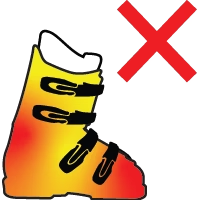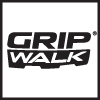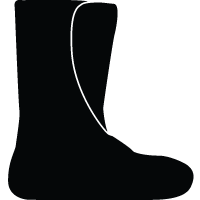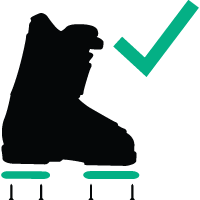product specs
Moldable Liner:
Yes More Info
More Info
Moldable Liner

In recent years, many manufacturers have started building liners that can be custom molded to the skier’s foot using a specialized oven. The liner is heated to soften the inner foam and inserted into the boot shell. The skier then inserts their foot, tightens the buckles and stands in the boots while the liners cool and form to their feet. A heat moldable liner allows for greater fit customization for the skier and ultimately more comfort.
**The liner molding process should always be performed by a qualified boot-fitter with the proper tools. Trying this at home could damage your liners. **
Moldable Shell:
No More Info
More Info
Moldable Shell

Some manufacturers have introduced a heat moldable boot shell. Similar to a heat moldable liner, these shells are placed in a specialized oven and heated to soften the plastic of the shell. The boot is then placed on the skier’s foot and allowed to cool and form to the skier’s feet. A heat moldable shell offers the ultimate customization for the entire foot rather than traditional boot fitting techniques like punching or grinding.
**The shell molding process should always be performed by a qualified boot-fitter with the proper tools. Trying this at home could damage your boots.**
Sole Type:
 More Info
More Info
Sole Type

Alpine ISO 5355 - The most common sole type for inbounds skiing, the Alpine ISO 5355 norm is the traditional flat sole style with hard plastic where the boot contacts the binding. Boots with an Alpine ISO 5355 sole are compatible with Alpine, MNC, WTR and GripWalk certified bindings.

GripWalk - GripWalk has become an industry standard sole type over recent years and is often found in alpine specific boots and some hybrid inbound/touring boots containing tech toe and heel fittings. Originally introduced to provide a more natural walking feeling, GripWalk soles feature a more rockered profile. GripWalk boots are compatible with GripWalk certified bindings along with MNC, WTR and touring bindings (provided the boot has tech fittings).

Touring ISO 9523 - The Touring ISO 9523 sole type has tech fittings in both the toe and heel of the boot and a rockered rubber sole for more natural walking. Some Touring ISO 9523 boot soles feature an anti friction device plate that aids in release, but others do not. Boots in this category are compatible with ISO Certified touring bindings and MNC bindings.

Non ISO-Certified - Non ISO-Certified touring boots are built outside the standard norm for Touring ISO 9523, but are compatible with the universal tech (pin) bindings. These boots are only compatible with bindings certified for non compliant touring boots.
Liner Type:
Tongue More Info
More Info
Liner Type

Tongue - The tongue style liner is the classic liner construction found in most ski boots. Tongue liners are often thinner than wrap style liners but offer a better fit for those with a higher instep.

Wrap - Wrap liners are less common than tongue liners and are often found in a 3 piece style boot like the Dalbello Krypton/Lupo line or any Full Tilt boot. Wrap liners generally take up more volume in the boot shell, and are better suited for skiers with skinnier legs/calves.
Tech Toe Compatible:
NoTech Toe Compatible

Modern touring bindings have been engineered to attach differently than a traditional alpine binding. The “Tech” style binding uses pins that fit into specific inserts in the sides of the boot’s toe and into the back of the boot’s heel. These special inserts are built into the boot and are necessary to utilize a tech style touring binding.
Walk Mode:
Yes More Info
More Info
Walk Mode

Walk modes are generally found on all touring boots and some inbounds alpine boots. Walk mode can be advantageous to both a resort skier looking for comfort and a backcountry skier looking for increased range of motion and efficiency when skinning uphill. A walk mode device allows the user to free the cuff of the boot to flex both forward and backward, allowing for a more natural stride.
Replaceable Soles:
Yes More Info
More Info
Replaceable Soles

Some boots feature replaceable soles in the form of plastic plates that screw on and off the sole of the boot. Replaceable soles prolong the life of the boots once they’ve experienced lots of wear from walking on non-snow surfaces.
Lange XT 130 LV
product specs
Moldable Liner:
Yes More Info
More Info
Moldable Liner

In recent years, many manufacturers have started building liners that can be custom molded to the skier’s foot using a specialized oven. The liner is heated to soften the inner foam and inserted into the boot shell. The skier then inserts their foot, tightens the buckles and stands in the boots while the liners cool and form to their feet. A heat moldable liner allows for greater fit customization for the skier and ultimately more comfort.
**The liner molding process should always be performed by a qualified boot-fitter with the proper tools. Trying this at home could damage your liners. **
Moldable Shell:
No More Info
More Info
Moldable Shell

Some manufacturers have introduced a heat moldable boot shell. Similar to a heat moldable liner, these shells are placed in a specialized oven and heated to soften the plastic of the shell. The boot is then placed on the skier’s foot and allowed to cool and form to the skier’s feet. A heat moldable shell offers the ultimate customization for the entire foot rather than traditional boot fitting techniques like punching or grinding.
**The shell molding process should always be performed by a qualified boot-fitter with the proper tools. Trying this at home could damage your boots.**
Sole Type:
 More Info
More Info
Sole Type

Alpine ISO 5355 - The most common sole type for inbounds skiing, the Alpine ISO 5355 norm is the traditional flat sole style with hard plastic where the boot contacts the binding. Boots with an Alpine ISO 5355 sole are compatible with Alpine, MNC, WTR and GripWalk certified bindings.

GripWalk - GripWalk has become an industry standard sole type over recent years and is often found in alpine specific boots and some hybrid inbound/touring boots containing tech toe and heel fittings. Originally introduced to provide a more natural walking feeling, GripWalk soles feature a more rockered profile. GripWalk boots are compatible with GripWalk certified bindings along with MNC, WTR and touring bindings (provided the boot has tech fittings).

Touring ISO 9523 - The Touring ISO 9523 sole type has tech fittings in both the toe and heel of the boot and a rockered rubber sole for more natural walking. Some Touring ISO 9523 boot soles feature an anti friction device plate that aids in release, but others do not. Boots in this category are compatible with ISO Certified touring bindings and MNC bindings.

Non ISO-Certified - Non ISO-Certified touring boots are built outside the standard norm for Touring ISO 9523, but are compatible with the universal tech (pin) bindings. These boots are only compatible with bindings certified for non compliant touring boots.
Liner Type:
Tongue More Info
More Info
Liner Type

Tongue - The tongue style liner is the classic liner construction found in most ski boots. Tongue liners are often thinner than wrap style liners but offer a better fit for those with a higher instep.

Wrap - Wrap liners are less common than tongue liners and are often found in a 3 piece style boot like the Dalbello Krypton/Lupo line or any Full Tilt boot. Wrap liners generally take up more volume in the boot shell, and are better suited for skiers with skinnier legs/calves.
Tech Toe Compatible:
NoTech Toe Compatible

Modern touring bindings have been engineered to attach differently than a traditional alpine binding. The “Tech” style binding uses pins that fit into specific inserts in the sides of the boot’s toe and into the back of the boot’s heel. These special inserts are built into the boot and are necessary to utilize a tech style touring binding.
Walk Mode:
Yes More Info
More Info
Walk Mode

Walk modes are generally found on all touring boots and some inbounds alpine boots. Walk mode can be advantageous to both a resort skier looking for comfort and a backcountry skier looking for increased range of motion and efficiency when skinning uphill. A walk mode device allows the user to free the cuff of the boot to flex both forward and backward, allowing for a more natural stride.
Replaceable Soles:
Yes More Info
More Info
Replaceable Soles

Some boots feature replaceable soles in the form of plastic plates that screw on and off the sole of the boot. Replaceable soles prolong the life of the boots once they’ve experienced lots of wear from walking on non-snow surfaces.





